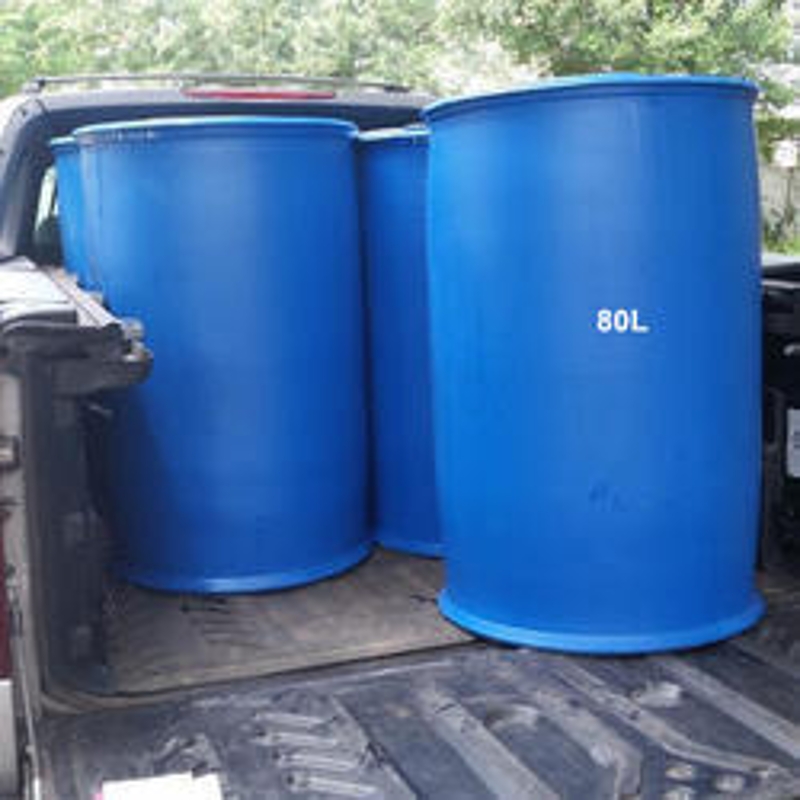-
Categories
-
Pharmaceutical Intermediates
-
Active Pharmaceutical Ingredients
-
Food Additives
- Industrial Coatings
- Agrochemicals
- Dyes and Pigments
- Surfactant
- Flavors and Fragrances
- Chemical Reagents
- Catalyst and Auxiliary
- Natural Products
- Inorganic Chemistry
-
Organic Chemistry
-
Biochemical Engineering
- Analytical Chemistry
-
Cosmetic Ingredient
- Water Treatment Chemical
-
Pharmaceutical Intermediates
Promotion
ECHEMI Mall
Wholesale
Weekly Price
Exhibition
News
-
Trade Service
【Chemical Machinery and Equipment Network Star Enterprise】How much do you know about new aerosol spectroscopy technology?
* Multi-color LED – Clear calibration curve
with high linearity
In order to help you get a clearer picture of product performance, AQ Guard smart application examples for grid monitoring and Fidas® Smart installation and calibration videos were also presented
online.
Finally, the host of this live broadcast also communicated with Manager Deng Jun on some issues in the message section, such as further explaining the difference between aerosol spectroscopy and traditional particle monitoring, and the application of outdoor monitoring
.
With the continuous improvement of air quality and the continuous decline of PM2.
5 index, China's air pollution control is increasingly developing in the direction of refinement, intelligence and informatization, which also requires more accurate environmental monitoring data support
.
Take PM2.
5, which has dropped sharply in annual concentration, the degree of improvement is obvious to all, but the technical breakthrough continues, the technical requirements for fine particulate matter, single particulate matter monitoring and tracing are higher, and the support of traditional monitoring methods is obviously insufficient
.
5 index, China's air pollution control is increasingly developing in the direction of refinement, intelligence and informatization, which also requires more accurate environmental monitoring data support
.
Take PM2.
5, which has dropped sharply in annual concentration, the degree of improvement is obvious to all, but the technical breakthrough continues, the technical requirements for fine particulate matter, single particulate matter monitoring and tracing are higher, and the support of traditional monitoring methods is obviously insufficient
.
This is precisely where the strength of new aerosol spectroscopy techniques, especially the study
of very fine particles, lies.
The environmental protection online HB class once invited Palas Instrument, which specializes in aerosol spectroscopy technology, to share the theme of "New HJ653 and the Verified Palas Single Particle Counting Aerosol Size Distribution Spectrometer Technology", which may be impressed
.
of very fine particles, lies.
The environmental protection online HB class once invited Palas Instrument, which specializes in aerosol spectroscopy technology, to share the theme of "New HJ653 and the Verified Palas Single Particle Counting Aerosol Size Distribution Spectrometer Technology", which may be impressed
.
But can an online course clarify the new aerosol spectroscopy technique? After a basic understanding of this technology, how much do you know about the actual application?
After almost 5 months, Palas continues this link! On October 14, Palas presented an "advanced" online course
on the topic of "Application of Novel Aerosol Spectroscopy Methods in Environmental Fine Particulate Matter Monitoring and Research".
on the topic of "Application of Novel Aerosol Spectroscopy Methods in Environmental Fine Particulate Matter Monitoring and Research".
(Click to review live ↑)
The parent company of Palas is a Frankfurt-listed company headquartered in Germany and has established a subsidiary
in China since 2020.
Deng Jun, China environment and automotive business development manager of Palas, said that in the past, Palas was distributed more through agents, which may not be familiar to many people, but in fact, Palas SPADS is widely used
in European monitoring networks.
Today, China has huge market development potential in particulate matter monitoring, especially the HJ653-2021 "Technical Requirements and Detection Methods for Continuous Automatic Monitoring System for Ambient Air Particulate Matter (PM10 and PM2.
5)" implemented in June, which added new momentum
to this segment.
in China since 2020.
Deng Jun, China environment and automotive business development manager of Palas, said that in the past, Palas was distributed more through agents, which may not be familiar to many people, but in fact, Palas SPADS is widely used
in European monitoring networks.
Today, China has huge market development potential in particulate matter monitoring, especially the HJ653-2021 "Technical Requirements and Detection Methods for Continuous Automatic Monitoring System for Ambient Air Particulate Matter (PM10 and PM2.
5)" implemented in June, which added new momentum
to this segment.
Coupled with 2021, the World Health Organization once again raised the guideline value of PM2.
5 for human health, entering the "single-digit" era (5μg/m³), and particulate matter detection has obviously ushered in new technical challenges and market opportunities
.
As mentioned earlier, traditional particulate detection methods have high accuracy but are insufficient in in-depth study of fine particulate matter, especially the source, cause, and change of very fine particulate matter, so the advantages of single particle aerosol size distribution spectrometry (SPADS
) are highlighted.
5 for human health, entering the "single-digit" era (5μg/m³), and particulate matter detection has obviously ushered in new technical challenges and market opportunities
.
As mentioned earlier, traditional particulate detection methods have high accuracy but are insufficient in in-depth study of fine particulate matter, especially the source, cause, and change of very fine particulate matter, so the advantages of single particle aerosol size distribution spectrometry (SPADS
) are highlighted.
Deng Jun of Palas Instrument also compared the difference between SPADS and turbidity measurement (the former is a single-particle measurement, the latter is a particle group measurement), analyzed the principle and difference of single-particle aerosol size distribution spectrometry (SPADS), and introduced Palas' innovative technology - light source selection and T-shaped optical path design
.
.
* Multi-color LED – Clear calibration curve
with high linearity
*Minimum detectable particles 180nm
*Single count concentration up to 20.
000 particles/cm³
000 particles/cm³
* Virtually no boundary errors
*Coincidence error: Correctable
at concentrations up to 106 particles/cm³
at concentrations up to 106 particles/cm³
According to Deng Jun, Palas Instrument has obtained the certification of TUV, the German authoritative organization, and has entered the national monitoring network
.
.
Reflected on the product, Palas' flagship Fidas 200 series can simultaneously provide multiple PM values, particle number concentration, particle size distribution, and high time resolution (1 second interval), whether in compliance monitoring, particulate matter characteristics scientific research, mobile navigation monitoring, particulate emission diffusion research and other applications
.
Fidas® Smart, in particular, is an upgraded version specifically for the Chinese market and complies with Chinese policies, regulations and standards
.
.
Fidas® Smart, in particular, is an upgraded version specifically for the Chinese market and complies with Chinese policies, regulations and standards
.
Palas also launched a compact air quality monitor AQ Guard smart this year, which has high accuracy, automatic heating (to avoid the influence of ambient temperature and humidity), and the biggest feature is the on-site automatic calibration function, which can comprehensively measure CO2, VOCs,PM2.
5, PM10, AQI and other data
.
"At present, the product is in the promotion stage, welcome to contact us for scene trial", interested partners, don't miss it
.
5, PM10, AQI and other data
.
"At present, the product is in the promotion stage, welcome to contact us for scene trial", interested partners, don't miss it
.
Regarding the application of Palas SPADS, this HB class also mentioned German motorway surveying, EMC navigation in London and Shanghai, Stockholm cruise port terminal monitoring, etc
.
Recently, Palas Instruments has also carried out "stepping points" throughout the country, including Chengdu, Shanghai, Beijing, Shenzhen, Hebei, etc.
, to record and compare
measured data.
.
Recently, Palas Instruments has also carried out "stepping points" throughout the country, including Chengdu, Shanghai, Beijing, Shenzhen, Hebei, etc.
, to record and compare
measured data.
In order to help you get a clearer picture of product performance, AQ Guard smart application examples for grid monitoring and Fidas® Smart installation and calibration videos were also presented
online.
Finally, the host of this live broadcast also communicated with Manager Deng Jun on some issues in the message section, such as further explaining the difference between aerosol spectroscopy and traditional particle monitoring, and the application of outdoor monitoring
.
There are too many wonderful, the length is too short, how can the text satisfy our thirst for knowledge! For more details, let's review this professional aerosol spectroscopy application "class" → [Application of New Aerosol Spectroscopy Methods in Environmental Fine Particulate Matter Monitoring and Research].
Hara: Wonderful Cut! A new technology for fine particulate matter monitoring, Palas instruments directly spread out particle size maps
Hara: Wonderful Cut! A new technology for fine particulate matter monitoring, Palas instruments directly spread out particle size maps







